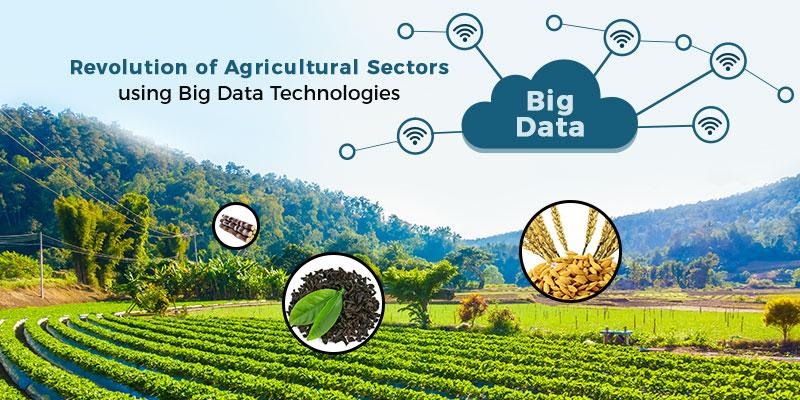Big Data positions the pitch for Agriculture Transformation! Check How?
Can you state what is the highly crucial thing for the existence of millions of people in this world?
In a world full of approximately 7.5 billion people to feed themselves, more attention is given to the technology and development of the economy.
Big Data is helping and changing multiple numbers of industries and transforming the sectors with remarkable development.
Almost 100 years ago, industrial development has begun but the digitalization in industries is endorsed in this age. Digitalization developed the face of agriculture and farming.
Also, the launch of drone technology and robotics has transformed the agriculture sector.

Why Agriculture needs Big Data?
Scientists have estimated that by 2050, the world’s population will reach 10 billion. This means that food consumption will be double to meet the need for such a big number of population. Approximately 40% of earth’s surface is already in use for agriculture and amazingly a huge amount of production goes in the waste throughout the process. Hence, Big Data is brought into the picture.
Big Data provides assistance for every problem and complexities in agriculture. It plays a vital role in creating an advanced and smart agricultural system. Farmers around the world may frequently get confused in decision making about the type of crop to be harvested. With the help of Big Data analytics, forecasts are drawn from the previous year’s climatic conditions, the nutrients of the soil, rainfall, etc. These sensible decisions with Big Data help to generate maximum production and help to strengthen the economic sector for the production of food.
Big Data in Agriculture
According to us, these are the ways in which Big Data is helping the Agriculture sector.
1. Monitoring Natural Trends
Before Big Data came into existence, it was impossible to forecast the important risk factors like pest and crop diseases, and natural disasters like storms or extreme weather which can destroy entire harvests. Yes, skilled agriculturists can notice the signs of these factors but it’s frequently too very late. By feeding past and present data into a system and extracting visions through Data Science and valid algorithms can effectively improve future yields. This saves farmers from a lot of losses.
2. Accurate Crop Prediction
Seeding the seed and waiting for a plant to grow and see how the crop will produce is a lengthy process. In recent years, Big Data as an exact forecast which provides assistance by predicting crop production exactly without even planting a seed. A perfect algorithm is used to evaluate the weather conditions and datasets of the crop from the last few years and predict the best crop this year.
3. Agricultural Automation
Due to improvements in technology and big data, automated tools like farm bots, sprinklers, solar water pumps, and drips came into the picture. Drones are to be fitted with advanced sensors to update their data, monitor crops, notifying the area needed for progress. Robots are used in many parts of the world for planting kernels of corn and picking up the weeds which destroy the main crop.
4. Data-Driven Industry
The other advantageous side of Big Data is that it is connected with external platforms for an extensive amount of data and insights. Farmers can use predictive techniques to plan for and act as per the weather patterns, customer demands, and trends. This data will assist them to understand how the surrounding world affects the agriculture industry. What should they plant? What is the best time? Are the prices of supplies rising? and how does this affect profits? All these generate a need to create a data-driven industry that operates in new and innovative ways to make room for data-driven solutions.
5. Risk Assessment
Usually, business, management, and planning teams regularly carry out a detailed risk assessment. But till now it is not applied in the agriculture sector. With the help of Big Data, every system, decision, or event can be considered in the risk analysis plan. Every problem can be accounted for not just an appropriate solution but with the expected results. It makes sure that taking these actions won’t decimate the crop. Most importantly, they can use real-time data to ensure damage remains minimal.
Conclusion
The capacity of Big Data is now forceful in the agriculture sector. Big Data analytics and machine learning play a big role in forecasting various complexities involved in the production process. Big Data will ultimately progress in the future and bring more advancement and automation in farming.
